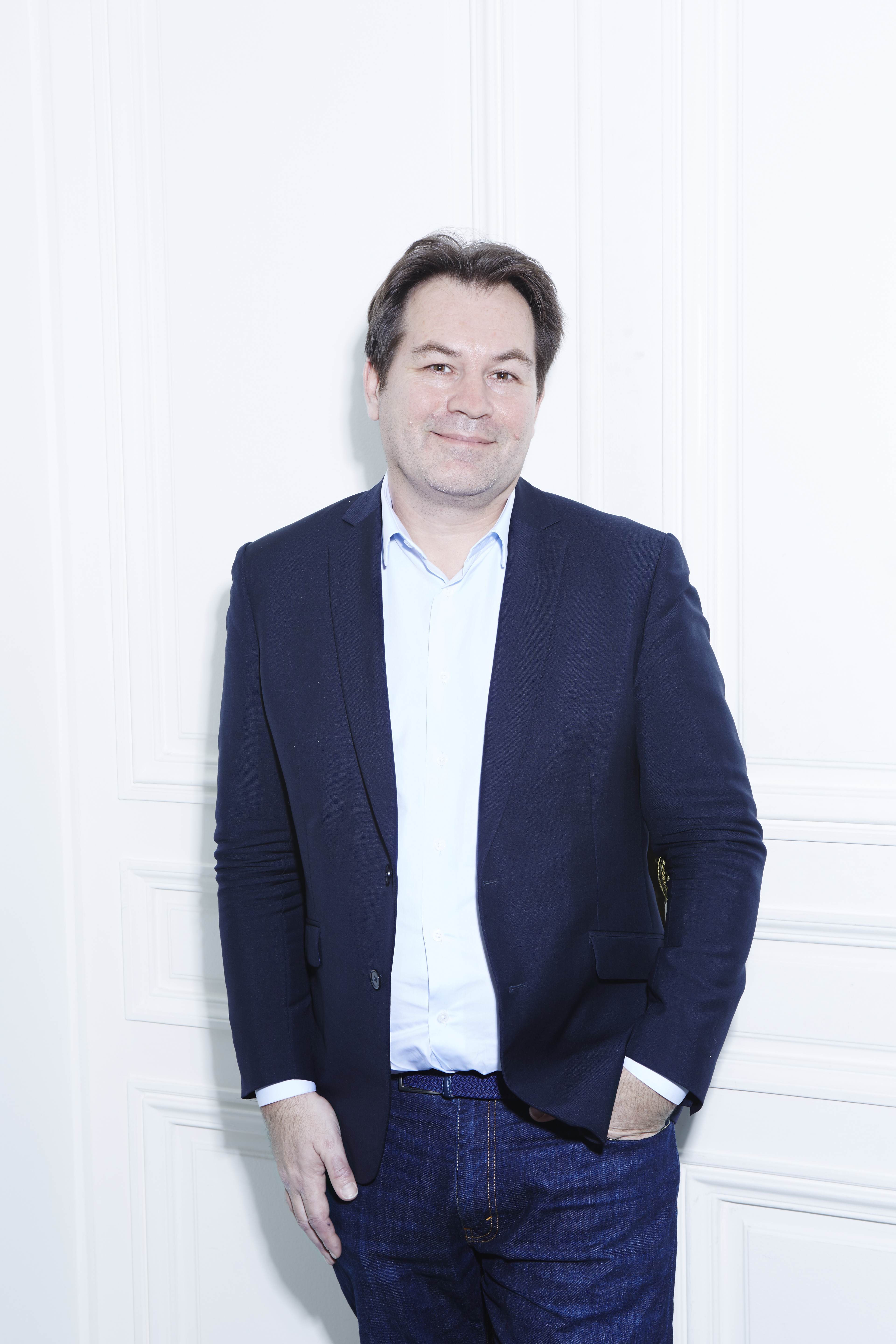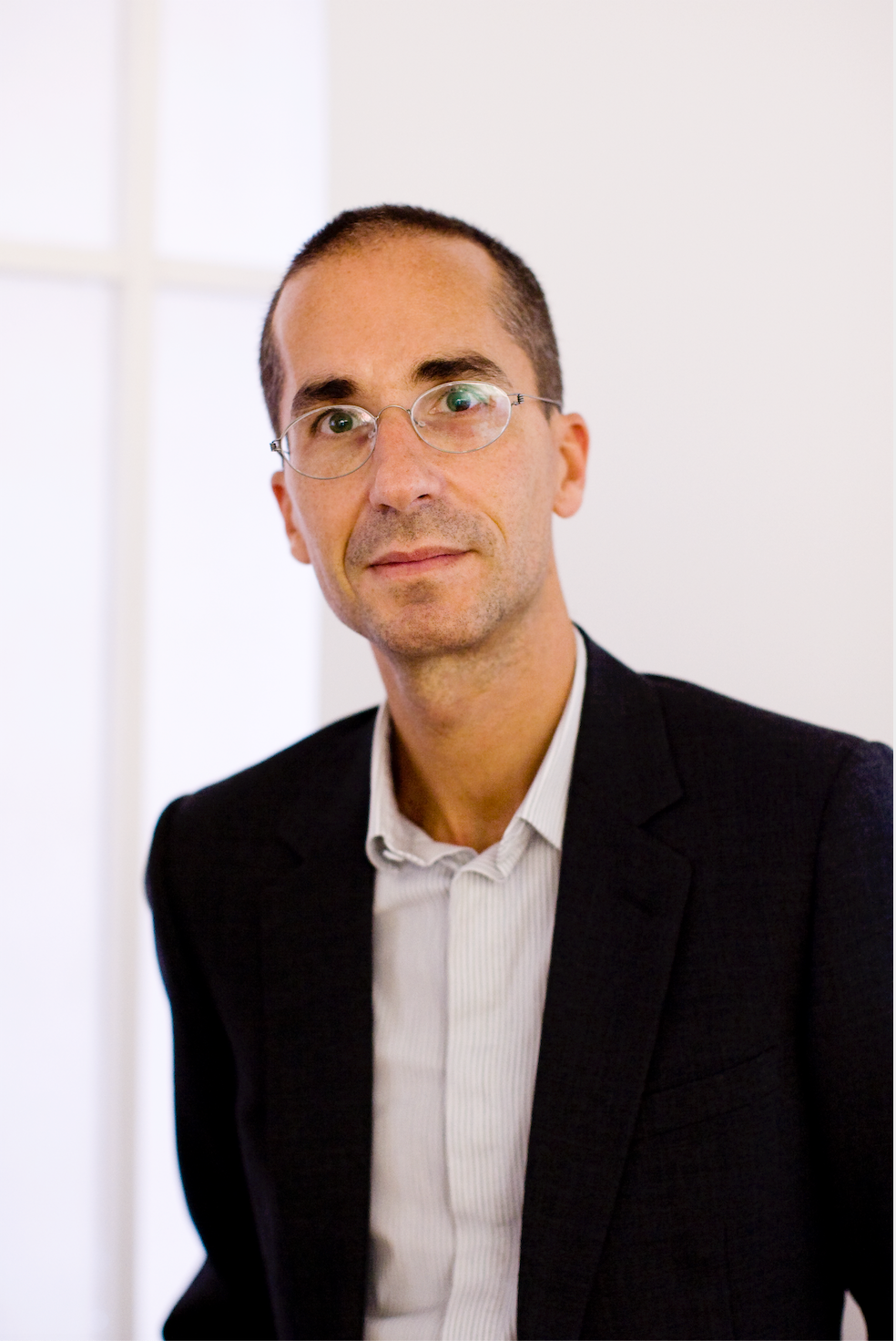Art Paris Art Fair: Guillaume Piens and Hervé Mikaelof
[03.09.2021]The first Modern and Contemporary art fair to be held in the Grand Palais Éphémère (replacement building set up behind the Eiffel Tower while renovation work is conducted on the 19th century Grand Palais), Art Paris Art Fair will finally be taking place from 9 to 12 September 2021. Ahead of the opening we interviewed its director Guillaume Piens, as well as its guest curator Hervé Mikaeloff.
Guillaume Piens, Director of Art Paris Art Fair
Guillaume Piens, you have been Director of Art Paris for almost 10 years now. Is your job a vocation?
 Absolutely yes. Art has always been part of my life and it is as essential to me as the air I breathe. I have worked for more than 20 years in the world of art fairs, having started with FIAC then with Paris Photo. I took over the direction of Art Paris in 2012 with my partner Catherine Vauselle to reinvent it at the request of the fair’s owners, Julien and Valentine Lecêtre. I particularly like fairs because they reflect an extremely dynamic and lively universe in touch with global artistic news and developments. A fair is at the same time an amplifier, a sounding board and a mirror of trends. Each edition is a challenge and is different. The job is complex because you have to be a good organizer, have an artistic vision and know the art market and its different players (galleries, artists, collectors, museum directors, etc.). At a personal level, being an explorer by nature, my job has given me the chance to travel the world and the opportunity to make very wonderful and enriching discoveries.
Absolutely yes. Art has always been part of my life and it is as essential to me as the air I breathe. I have worked for more than 20 years in the world of art fairs, having started with FIAC then with Paris Photo. I took over the direction of Art Paris in 2012 with my partner Catherine Vauselle to reinvent it at the request of the fair’s owners, Julien and Valentine Lecêtre. I particularly like fairs because they reflect an extremely dynamic and lively universe in touch with global artistic news and developments. A fair is at the same time an amplifier, a sounding board and a mirror of trends. Each edition is a challenge and is different. The job is complex because you have to be a good organizer, have an artistic vision and know the art market and its different players (galleries, artists, collectors, museum directors, etc.). At a personal level, being an explorer by nature, my job has given me the chance to travel the world and the opportunity to make very wonderful and enriching discoveries.
How would you qualify the position of Paris on the global art market today?
I quite simply believe that Paris is gradually becoming the major center for Contemporary art in Europe. In September 2021, Art Paris is part of an exceptional renaissance of the ‘City of Light’ marked by the opening of new galleries and institutions that will reflect the activities of the VIP program reserved for collectors and invited art professionals. The 2021 edition, which welcomes 140 galleries from around 20 countries, is distinguished by the arrival (or return) of some very high-profile galleries. A primary theme will be developed by our guest curator Hervé Mikaeloff. Entitled “Portrait et figuration, un regard sur la scene française” (Portrait and figurative art, a focus on the French scene), it focuses on the renewal of figurative painting in France with a selection of 20 artists illustrating the diversity of the French scene.
Hervé Mikaeloff, independent curator and Contemporary art consultant
 Hervé you are guest curator of the focus on the French scene of Art Paris 2021. “Portrait and figuration, a focus on the French scene”. What would you like to say about this young scene?
Hervé you are guest curator of the focus on the French scene of Art Paris 2021. “Portrait and figuration, a focus on the French scene”. What would you like to say about this young scene?
Nowadays, the French art scene is particularly abundant. I am impressed by the dynamism and vitality of the artistic proposals that can be found in France. A lot of artists have taken their destiny into their own hands by organizing themselves into collectives or around places of residence, such as the Poush Manifesto in Clichy (in the suburbs of Paris), which can accommodate around a hundred artists with very different projects. This artistic incubator seems to be a precursor of the Grand Paris project (a new global plan for the Paris metropolitan region).
For Art Paris 2021, we wanted to focus on portrait and figurative painting. Painting is making a strong comeback on the French scene nowadays, but we can’t really speak of a movement because each artist stands out and expresses him/herself in a very unique way.
In these troubled times, artists are more than ever questioning their relationship to the image, but they remind us of the vital necessity of culture for mankind. There is currently a renewal of figurative art, whether in dialogue with classical painting or as a reflection of the intimacy of our society. The portrait allows artists to build a new relationship with the world. It acts both as a banner of individual differences and a pillar of our collective humanity. In the schema described by Emmanuel Levinas, there is the shape, the anatomical support of the face and then the face that defies all material analysis. A person depicted cannot be made to reveal everything and yet sometimes the artist’s interpretation helps us to discern fragments of truth.
The face allows us to consider our relationships with others; behind the face of the other, there is humanity in its entirety. Representing man ultimately means learning about our own responsibilities towards the world.
Is it possible to understand the art of today without knowing about art history?
Having studied at the Ecole du Louvre and coming from a family of antique dealers, it seemed logical for me to follow a classical training… I always advise a potential collector to go to the Louvre and Orsay then to the Center Pompidou and to the Palais de Tokyo before starting to collect. Collecting is like entering psychoanalysis. A collector needs to analyse his or her own expectations as closely as possible in order to be able to respond better to them. Essential qualities that an exhibition curator needs are a global vision of all artistic forms and a certain proximity to the artists by accompanying them. You also need to be able to listen to and dialogue with artists in order to practice this profession.
Copryright Portrait de Guillaume Piens par Chiara Santarelli




 0
0
